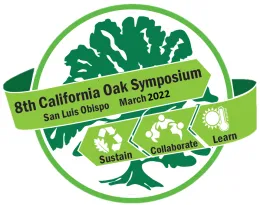#37

Detecting Introgression and Determining the Potential of Adaptive Gene Flow Between Two Hybridizing Californian White Oaks (Quercus sect. Quercus)
Scott T. O’Donnell, University of California, Los Angeles, Department of Ecology and Evolutionary Biology
Sorel T. Fitz-Gibbon, University of California Los Angeles, Department of Ecology and Evolutionary Biology and Victoria L. Sork, University of California Los Angeles, Department of Ecology and Evolutionary Biology and Institute of the Environment and Sustainability
The ability of closely related oaks (Quercus spp.) to hybridize is well known. This ability may also increase the potential for exchanging genetic variation across species boundaries through backcrossing events; a process otherwise known as introgression. This phenomenon should not only result in the exchange of neutral genetic variation between species, but it also could transfer of beneficial alleles. To test this hypothesis, we focused on two white oak (Quercus sect. Quercus) species found in the California Floristic Province that freely hybridize when in close proximity: the more mesic Engelmann oak (Quercus engelmannii) and the drought tolerant California scrub oak (Q. berberidifolia). Whole-genome sequence data was generated for 75 individuals of both Q. berberidifolia and Q. engelmannii (150 total samples) collected throughout southern California where their contemporary ranges overlap. By comparing genomic sequence data between these two species, regions of the genome that contain heightened levels of introgression relative to background levels of shared genetic variation between species were identified. These regions of the genome were then mapped to the well-annotated valley oak (Q. lobata) reference genome to identify any potential functional genes in these portions of the genome. Additionally, we analyzed the patterns of introgression at a landscape scale to determine if some populations were experiencing differential levels of introgression of functional genes depending on the location. We found several genes that are potentially important to traits associated with climate adaptation that have patterns of introgression suggestive of differential selection between populations. These results indicate that introgression may have the potential to directly influence the fitness of the species involved. Further work should be focused on specific introgressed alleles associated with increased levels of fitness.
